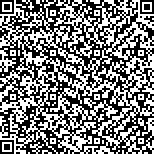本文已被:浏览 851次 下载 500次
Received:May 23, 2020 Published Online:October 20, 2020
Received:May 23, 2020 Published Online:October 20, 2020
中文摘要: 目的 观察右美托咪定联合罗哌卡因切口浸润对后路腰椎融合手术后镇痛的影响。
方法 选取2019年1月至12月择期行后路腰椎手术患者60例,随机分为3组,每组20例。于缝切口前行局部浸润麻醉,R组注入0.5%罗哌卡因30 ml,D1、D2组分别注入右美托咪定1.0、1.5 μg/kg复合0.5%罗哌卡因30 ml。记录麻醉苏醒时间、麻醉后恢复室(PACU)停留时间以及心动过缓、低血压和镇静过度发生情况;比较三组患者术后4、8、12、24、48 h的视觉模拟评分(VAS)疼痛评分;记录术后首次要求镇痛时间、补救镇痛例数、术后24 h和48 h镇痛泵按压次数和恶心呕吐、眩晕发生情况。
结果 三组均无镇静过度病例。三组患者苏醒时间、PACU停留时间和心动过缓、低血压发生率比较差异均无统计学意义(P均>0.05)。与R组比较,D1组术后8、12、24 h VAS评分显著降低,D2组术后8、12、24、48 h VAS评分显著降低(P均<0.05);D1组、D2组首次要求镇痛时间明显延迟,且D2组迟于D1组(P均<0.05);D1组、D2组补救镇痛发生率明显降低(P均<0.0167),24 h和48 h镇痛泵按压次数明显减少(P均<0.05)。三组术后恶心呕吐、眩晕发生率比较差异无统计学意义(P>0.05)。
结论 右美托咪定1.0 μg/kg或1.5 μg/kg复合罗哌卡因局部浸润能延长罗哌卡因作用时间,有效减轻后路腰椎融合术后疼痛,减少术后镇痛药物的用量。
Abstract:Objective To observe the effects of incision infiltration with dexmedetomidine and ropivacaine on postoperative analgesia in patients after posterior lumbar fusion.
Methods Sixty patients who underwent posterior spinal fusion surgery from January to December 2019 were randomly divided into group R,group D1and group D2 (n=20,each).For local infiltration before incision suture closure,0.5% ropivacaine 30 ml was given in group R;1.0 μg/kg dexmedetomidine with same dose of ropivacaine was used in group D1;1.5 μg/kg dexmedetomidine with same dose of ropivacaine was used in group D2.
Recovery time from anesthesia, PACU stay time, and the occurrence of bradycardia, hypotension and excessive sedation were recorded; the VAS scores of the patients of three groups were compared at 4, 8, 12, 24 and 48 hours after operation.
The first time required for analgesics,the cases of required remedial analgesia,the number of analgesia pump pressing at 24 h and 48 h after operation and the occurrence of nausea,vomiting and vertigo were observed and recorded.
Results There were no cases of excessive sedation in three groups and no significant differences in recovery time,PACU stay time and the incidence of bradycardia and hypotension among three groups (all P>0.05).Compared with group R,VAS scores significantly decreased at 8-,12-,24- hour after operation in group D1 and at 8-,12-,24- and 48-hour after operation in group D2 (all P<0.05);the first time required for analgesics delayed in other two groups,and was statistically later in group D2 than that in group D1(all P<0.05);the incidence of salvage analgesia was lower in group D1 and group D2(all P<0.0167),and the number of the analgesic pump pressing at 24 h and 48 h in group D1 and group D2 decreased (all P<0.05).
There was no statistical difference in the incidence of postoperative nausea,vomiting and vertigo among the three groups (all P>0.05).
Conclusion In posterior lumbar fusion,local infiltration of dexmedetomidine (1.0、1.5 μg/kg)combined with ropivacaine can prolong the active time of ropivacaine,effectively relieve postoperative pain and reduce the amount of postoperative analgesic consumption.
文章编号: 中图分类号: 文献标志码:B
基金项目:
| Author Name | Affiliation |
| HUANG Li-bing,ZHU Juan,YANG Hai-ji | Department of Anesthesiology,Jiangsu Province Hospital of Chinese Medicine,Nanjing,Jiangsu 210029,China |
| Author Name | Affiliation |
| HUANG Li-bing,ZHU Juan,YANG Hai-ji | Department of Anesthesiology,Jiangsu Province Hospital of Chinese Medicine,Nanjing,Jiangsu 210029,China |
引用文本:
